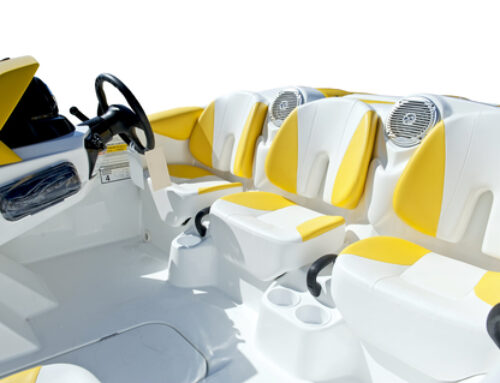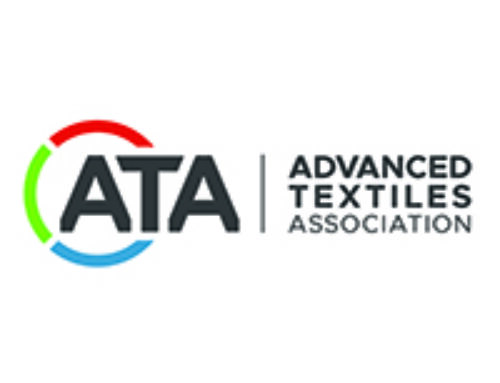Step toward technology
Darren Arthur runs his marine canvas shop with two employees—and he’s added an automated plotter-cutter system to improve productivity.
The decision to buy a plotter-cutter system for my marine canvas shop was initially an overwhelming idea,” says Darren Arthur, owner of Nautilux Custom Canvas LLC in Hazlet, N.J. “I had never seen that type of technology in a small shop—but I knew that was the direction I wanted to go. Two years ago, I started to research systems.” He recently installed the plotter-cutter system.
Close to home
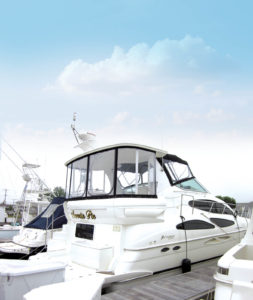
For Sweetie Pie, Arthur designed a series of tracks and changed their position to give proper watershed. To complete the project, he installed EZ2CY front windows for optimal visibility.
Arthur’s entry into the marine canvas world began when he was 15—racing sailboats and working in a local canvas shop and sail loft in the Toronto area in Ontario, Canada. He studied engineering in college while continuing to work at the shop, including designing sails and doing the patterning, frame bending and installations. After several years of traveling and sailing, Arthur married and relocated to New Jersey, again taking a position at a sail loft before deciding to open his own marine canvas company. “Working at a sail loft and sailing had become so time intensive,” he says. “I thought I needed a job that was less demanding of my time—something I laugh at now. Running your own business is not a 9-to-5 sort of job.”
Although Arthur had experience with canvas and sails, he knew very little about sewing when he opened Nautilux Custom Canvas. He engaged the help of a coworker from the sail loft, who taught him the basics of putting together biminis and dodgers. And because Arthur had no client contacts in the area upon starting the business, he decided to work out of his home to keep costs down and minimize risk.
Connections and partners
Attending boat shows and building relationships from those contacts was the other strategy Arthur used to build his client base. In 2003, he attended a boat show at Liberty State Park in Jersey City, N.J., which resulted in two projects for him. One of those jobs was on a Hunter sailboat. After Arthur had completed the work, the client took the boat in for service to a local Hunter dealer, who asked him who had done the canvas work. Soon after, Arthur received a call from the yacht broker and began doing the canvas on all the broker’s sailboats. The following year, Arthur began doing canvas for the dealer’s powerboats as well. “We’ve established such a strong client base now,” Arthur says. “Most recently we started doing all the Sea Ray work for a local dealer. These contacts come to us because of the quality of our work. We don’t chase them. They come to us.”
At another boat show in 2003—the Atlantic City Sailboat show—Arthur met Carl Pelligrini, the owner of Sea Canvas in Egg Harbor Township, N.J. The two developed a partnership and friendship that has been mutually beneficial. For the past several years they have shared a booth at the Atlantic City powerboat show. There they display a flybridge enclosure they built to showcase EZ2CY windows, which they both sell. Their shops are an hour and a half apart, and they essentially divide their territories and refer business to each other, as well as discuss strategies and solve problems. “We were both one-man shows when we met,” Arthur says. “We’ve gone through similar growth challenges and have grown our businesses similarly. We owe a lot of our success to each other.”
Research, research, research
In 2009, Arthur moved Nautilux out of his home to its current location—to have more space to fulfill the growing demands and to prepare space for installing the plotter-cutter system he hoped to buy one day. By 2011 he began researching systems. “The first plotter-cutter I saw in action was several years ago in Mike Erickson’s shop [Canvas Designers, Riviera Beach, Fla.],” Arthur says. “I remember thinking, ‘Sure, he can afford this type of thing. He’s got a big shop. But could this kind of technology make sense for my shop?’”
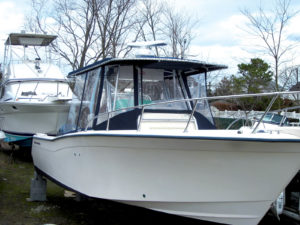
“We deal mostly with the end-user individual who comes in with some kind of problem, which we usually solve with standard work that has a custom twist,” Arthur says.
Arthur spent a lot of time on the phone asking questions about the systems available and on the Internet taking part in webinars. He also attended three IFAI Specialty Fabric Expos to see the systems in person and talk to the vendors, eventually narrowing down his options to three companies before selecting the system he felt was right for his needs. “I had to learn the terms, and what I should be looking for, and what questions I should be asking,” Arthur says. “I decided on the Aeronaut Micron, basing much of the decision on reliability and construction of the system—and the price point.”
Arthur also looked to Erickson for advice. “The technology has improved and the price has come down over the last 10 to 15 years, but I still didn’t need all the bells and whistles that are available—that just wouldn’t make sense for a small shop,” Arthur says. “I give a lot of the credit to Mike—he pointed me in the direction of the Aeronaut Micron.”
The Micron is a simpler version of the Aeronaut Elektron Quattro that Erickson has, and has only just become available in the United States. “The Micron has been sold in Europe for a number of years and the main difference between it and the Quattro is that it’s not a multi-tool system,” Arthur says. “It basically draws and cuts, but is set up for only one tool at a time. If I want to put more tools on, it’s a manual change. That’s why I’m able to get into this technology for less money than going with their other unit. We’ll be the first shop in the U.S. to have a Micron.”
Arthur took his “right hand” employee Steve Sinatra to the 2013 Marine Fabricators Association (MFA) National Convention in Cape Coral, Fla., and to visit Erickson’s shop so they could see how the equipment worked and gain a comfort level with it before their plotter-cutter arrived. “Mike has a new, simplified style of digitizing, which I wanted to see,” Arthur says. “Going there and seeing it confirmed the decision. I anticipate an enormous change in my efficiency all around the shop and look forward to this integration.”
Sigrid Tornquist is a freelance writer and editor based in St. Paul, Minn. She is also the associate editor of InTents magazine, a publication of the Industrial Fabrics Association International.
Some work is better than none
Damage done to the New Jersey shoreline and the boats harbored there by 2012’s Hurricane Sandy have resulted in increased demand for marine canvas work. How have you handled the spike in work load?
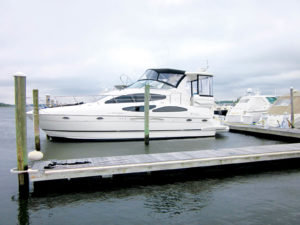 I started doing a lot of quoting in the spring after the hurricane, and at the time I was down one employee. It was just me and one other worker, so the first thing I did was hire another sewer. We were telling customers we were eight to 12 weeks out for work—and customers don’t like to hear that. So I started offering partial work as an option. For instance, if a customer ordered a four-sided flybridge enclosure that might have taken eight weeks, I would offer to do a three-sided enclosure in four weeks.
I started doing a lot of quoting in the spring after the hurricane, and at the time I was down one employee. It was just me and one other worker, so the first thing I did was hire another sewer. We were telling customers we were eight to 12 weeks out for work—and customers don’t like to hear that. So I started offering partial work as an option. For instance, if a customer ordered a four-sided flybridge enclosure that might have taken eight weeks, I would offer to do a three-sided enclosure in four weeks.
I really just stumbled on that solution but it saved my business. If I had turned people away they might have gone somewhere else. This was a huge opportunity to get new clients through the door. There wasn’t one person who didn’t take me up on the offer.
-Darren Arthur, owner
Nautilux Custom Canvas LLC
Standard work, custom twist
One of the reasons Darren Arthur is good at the marine fabrication business is that he understands the boating community and the user-impact of poorly designed or fabricated—or simply worn-out—elements. And that’s often the moment when clients seek out Arthur’s help.
The owners of Sweetie Pie—a 2003 cruiser—contacted Nautilux in 2012 because water was penetrating the vessel’s cockpit area.
“This type of project is a common setup and finish of the work we typically do,” Arthur says. “We deal mostly with the end user individual who comes in with some kind of problem, which we usually solve with standard work that has a custom twist.”
For Sweetie Pie, Arthur designed a series of tracks and changed their position to give proper watershed. He used sealer gaskets to redirect the water by creating drip edges. And to complete the project, he installed EZ2CY front windows for optimal visibility.
 TEXTILES.ORG
TEXTILES.ORG 




